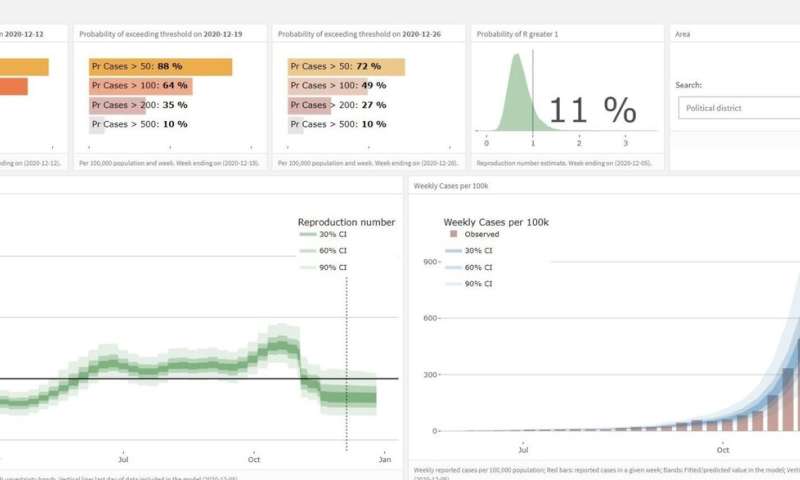
A new COVID-19 analysis tool that estimates which districts in Austria could become coronavirus hotspots has been launched by Imperial.
The website tool, uses reported cases and deaths to estimate the probability any of the 94 political districts of Austria will become COVID-19 ‘hotspots’ in the next three weeks.
The team behind the website, the Imperial College COVID19 Response Team, define a hotspot as a political district with more than 200 cases of COVID-19 per 100,000 of the population per week.
The site—which will be updated daily—currently highlights hotspots such as Tamsweg, Lienz and Murau with more than 600 reported cases per 100,000 population in the past week (up to 6 December 2020).
Using data on daily reported cases and weekly reported deaths, the team model the probability (%) that a political district will become a hotspot in the following week, the week after and three weeks from now, assuming no changes to policies or behaviors.
The R number
The site also provides estimates for each of the 94 Austrian political districts on whether number of infections are likely to be increasing or decreasing in the following week, and the probability of R(t) being greater than 1 in the following week.
The reproduction number R(t) indicates the number of people each infected person will pass the virus onto. An R(t) larger than 1 indicates the outbreak is not under control and cases will continue to increase.
Following a second nationwide lockdown which was in place from 3 November 2020, all political districts currently show a low (less than 50%) probability of having an R(t) over 1.
The website is produced by the WHO Collaborating Centre for Infectious Disease Modeling within the MRC Centre for Global Infectious Disease Analysis (GIDA), and Abdul Latif Jameel Institute for Disease and Emergency Analytics (J-IDEA) , in collaboration with the Department of Mathematics at Imperial College London and vektorraum.
Dr. Samir Bhatt, from the School of Public Health, said: “Here we provide high quality modeling estimates to inform decision making. Our estimates try to synthesize data and present a picture of the current rates of transmission and risk.”
Professor Axel Gandy, from the Department of Mathematics, said: “This is based on previous work for the UK which feeds into tier decisions by the Scottish government. We hope this proves similarly useful.”
Source: Read Full Article
